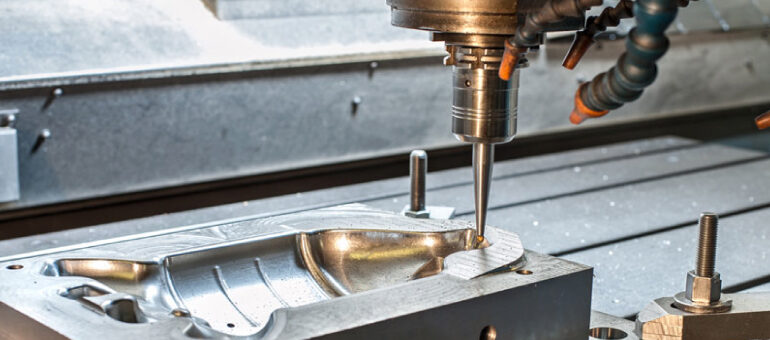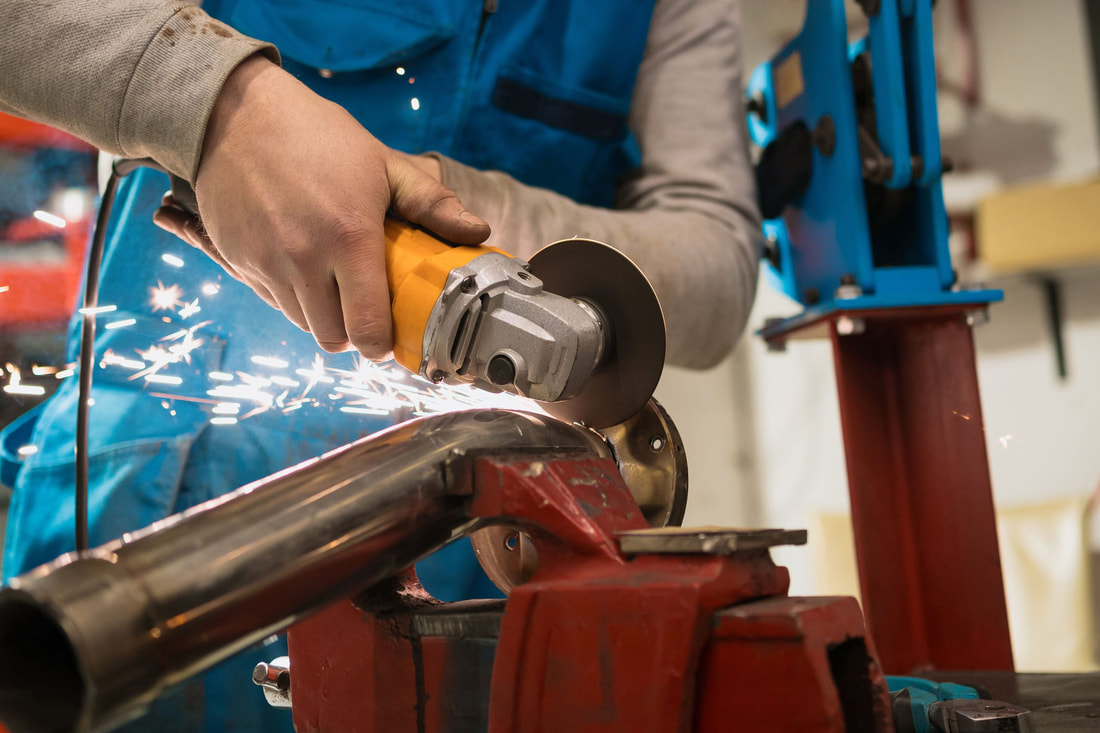 Introduction Sheet metal fabrication plays a important role in the aviation parts manufacturing industry. It involves the shaping and manipulation of thin metal sheets to create components used in aircraft construction. The precision and durability of these components are paramount to ensuring the safety and efficiency of aircraft operations. In this article, we will delve into the intricacies of Sheet Metal Fabrication Parts in the aviation parts manufacturing industry, exploring its types, significance, and where to find the best manufacturing companies. Sheet Metal Fabrication in Aviation Parts Manufacturing Sheet metal fabrication in aviation encompasses various processes aimed at transforming raw metal sheets into intricate components essential for aircraft construction. These processes include cutting, bending, shaping, welding, and finishing. Each step requires precision and adherence to strict quality standards to ensure the integrity of the final product. Types of Sheet Metal Fabrication
Aviation Parts Manufacturing Industry The aviation parts manufacturing industry is a critical sector responsible for producing various components and systems used in aircraft assembly. This industry encompasses a wide range of specialized companies, including sheet metal fabricators, avionics manufacturers, engine producers, and aircraft assembly plants. Where to Find the Best Sheet Metal Components Manufacturing Company Finding the best sheet metal component manufacturing company involves thorough research and evaluation of several factors:
Conclusion Sheet metal fabrication is an indispensable aspect of the aviation parts manufacturing industry, contributing to the production of high-quality components essential for aircraft construction. By understanding the various processes involved in sheet metal fabrication and knowing how to identify the best manufacturing companies, stakeholders in the aviation industry can ensure the reliability, safety, and efficiency of aircraft operations. Choosing the right manufacturing partner with the requisite expertise, technology, and quality standards is crucial for achieving success in aviation parts production. Also Read: The Basics Of Assy Design, Tips For Manufacturability
0 Comments
Introduction:
Metal casting is a very important operation across a wide range of sectors and industries in India's as big and complex manufacturing industry. Indgirka is one name which really stands out from the many businesses in this industry for its outstanding results and continuous dedication to quality. This valued business has made a name for itself as an innovator in the metal casting industry by increasing the bar with its strong dedication to keeping the highest standards of quality, promoting a culture of continuous improvement, and ensuring the highest level of satisfaction for its valued customers. Because of its excellent performance and tops expertise in metal casting sourcing, Indgirka has earned the right to be known as an innovator in the field of metal casting. Join us as we establish new standards and redefine the industry as we go on an in-depth search to discover all of the reasons why Indgirka is known as the best company in the sector.
Key Considerations When Selecting a Supplier: When it comes to sourcing Aluminum Casting Parts, several factors must be taken into account to ensure optimal outcomes for your manufacturing endeavors. These include: - Quality Assurance: Choose a supplier with a proven track record of delivering high-quality aluminum casting parts that meet stringent industry standards and specifications. - Technological Capabilities: Look out a source with innovative casting technology, current facilities, and skilled staff who can create complex and accurate aluminum components. - Customization Options: Choose a provider who can customize aluminum casting components to meet your unique needs, whether those needs have to do with material choices, design adjustments, or finishing processes. - Reliability and Consistency: To ensure continuous production schedules and satisfy client requests, choose an aluminum Casting Parts Supplier reputable for its dependability, consistency, and on-time delivery. Why Choose Us as Your Aluminum Casting Parts Supplier: As a leading provider of aluminum casting parts, we pride ourselves on our commitment to excellence, innovation, and customer satisfaction. Here's why you need to pick us as your reliable partner: - Extensive Experience:We have the abilities and expertise necessary to produce aluminum casting components that are perfectly crafted and of the highest quality due to our many years of experience in the field. - Advanced Technology: Modern casting processes and machines situated in our modern manufacturing facilities enable us to make aluminum components with tops efficiency and accuracy. - Customization Flexibility: We understand that every project is unique, which is why we offer flexible customization options to tailor aluminum casting parts to your exact specifications and preferences. - Quality Assurance: We guarantee that every aluminum casting item satisfies the highest quality standards by putting it through extensive examination and testing as part of our strict quality control procedures. - Reliable Supply Chain: With a robust supply chain network and efficient logistics management, we ensure timely delivery of aluminum casting parts, minimizing downtime and maximizing productivity for your operations. Conclusion: Indgirka's rise to the top metal casting sourcing industry in India is proof of its strong commitment to quality, innovation, and client-focused approach. Indgirka has established itself as an innovator in the market by seeking quality without compromise, utilizing technology innovations, providing flexible casting choices, adopting sustainability, increasing supply chain effectiveness, and providing excellent customer service.You can be confident that, when you choose us as your standard supplier, you will get premium aluminum casting parts that satisfy your exact specifications and are supported by our unwavering dedication to quality and client happiness. Indgirka is a reliable partner for customers looking for superior experience in metal casting sourcing, and it will not waver in its objective to surpass expectations and redefine standards as the need for premium metal castings from a variety of industries grows. Also Read: Top Aluminium Anodizing Services in India 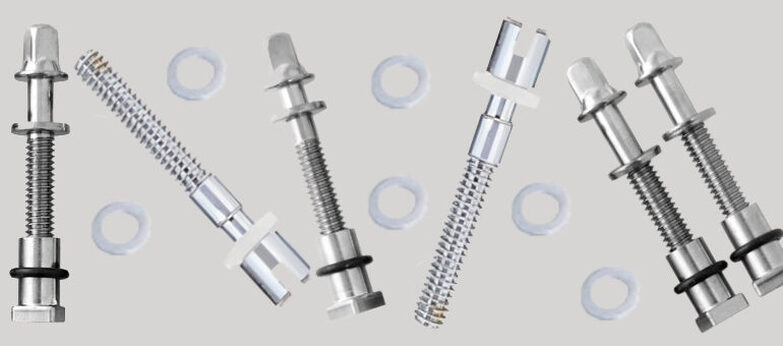 Drum Tension is an important component of drum making that affects the instrument's durability, playability, and tone. It takes careful engineering, premium components, and skilled craftsmanship to achieve the proper tension. In this paper, we explore the many methods, supplies, and quality assurance procedures used in the drum tension production process. Drum Tension: Drum tension refers to the level of tightness or tautness applied to the drumheads (the membrane stretched over the drum shell) within a drum set. It is a critical aspect of drum setup and plays a fundamental role in determining the sound, feel, and overall performance of the drums. Drum tension is adjusted by tightening or loosening the tension rods, which are threaded screws that connect the drumheads to the drum shell via the lugs. The Necessity of Drum Tension can be understood through several key aspects: 1. Sound Production: The tension of the drumheads directly influences the sound produced by the drum. Higher tension generally results in a higher pitch and brighter tone, while lower tension yields a deeper, warmer sound. Adjusting the tension allows drummers to tailor the sound of each drum to suit different musical styles, genres, and personal preferences. 2. Responsiveness and Playability: Proper tensioning ensures that the drumheads respond accurately and consistently to the drummer's strikes. Well-tuned drumheads provide a balanced rebound and sensitivity, facilitating precise control over dynamics, articulation, and ghost notes. This enhances the overall playability and expressiveness of the drum set, allowing drummers to perform with confidence and fluidity. 3. Projection and Resonance: Drum tension also affects the projection and resonance of the drums. Higher tension results in greater projection and sustain, making the drums more audible in live performances or large venues. Conversely, lower tension can enhance the natural resonance and depth of the drum sound, ideal for studio recordings or intimate settings. Finding the right balance of tension is crucial to achieving optimal projection, resonance, and clarity in different musical contexts. 4. Tuning Stability: Maintaining consistent drum tension is essential for tuning stability and reliability during performances. Well-tuned drumheads hold their pitch more effectively, minimizing the need for frequent adjustments mid-performance. Proper tensioning also helps prevent issues like overtones, uneven tuning across lugs, and drumhead slippage, ensuring a smooth and hassle-free playing experience. 5. Drum Durability: Balancing tension is important not only for sound quality but also for the longevity and durability of the drumheads and hardware. Excessive tension can place strain on the drumheads, lugs, and tension rods, increasing the risk of damage, warping, or breakage. By tuning the drums to an appropriate tension level, drummers can prolong the lifespan of their equipment and minimize the need for costly repairs or replacements. Manufacturing Process of Drum Tension 1. Drum Shell Preparation: - The manufacturing process typically begins with the preparation of the drum shell. Drum shells are commonly made from materials like wood (e.g., maple, birch, mahogany) or metal (e.g., steel, aluminum). - Wood shells: Wood shells are often crafted from multiple plies of wood laminated together. Each ply may have a different grain orientation to enhance strength and resonance. - Metal shells: Metal shells are usually formed through processes like spinning or welding. The choice of metal and thickness can significantly affect the drum's tone and resonance. - After shaping the shell, it undergoes sanding, smoothing, and finishing processes to ensure a uniform surface and enhance the aesthetic appeal. 2. Bearing Edge Creation: - The bearing edge is where the drumhead makes contact with the shell. Creating a precise bearing edge is crucial for achieving optimal drum tension and sound quality. - Traditional bearing edges are either rounded (like a baseball bat) or sharp (like a knife-edge). Each type offers different tonal characteristics and playability. - Modern manufacturing techniques utilize CNC (Computer Numerical Control) machines to precisely cut bearing edges to the desired specifications, ensuring consistency across multiple drums. 3. Hardware Installation: - Drum hardware includes components like lugs, tension rods, and hoops, which play a vital role in controlling drum tension. - Lugs are attached to the shell and hold the tension rods, allowing drummers to adjust the tension of the drumheads. They come in various designs, from classic tube lugs to modern bridge lugs. - Tension rods pass through the lugs and connect to the hoops, which secure the drumheads in place. High-quality tension rods and hoops are essential for maintaining consistent tension and preventing tuning issues. 4. Drumhead Selection and Installation: - Drumheads are available in a variety of materials, including plastic (e.g., Mylar), natural skin (e.g., calfskin), and synthetic materials (e.g., Kevlar). Each type offers different tonal characteristics and durability. - The choice of drumheads depends on factors like musical genre, playing style, and personal preference. For example, jazz drummers may prefer thinner, single-ply heads for a warmer tone, while rock drummers may opt for thicker, double-ply heads for added durability and projection. - Installing drumheads requires careful attention to detail to ensure proper alignment, tension, and seating. Improper installation can lead to tuning difficulties and uneven sound production. 5. Tensioning and Tuning: - Tensioning the drumheads involves tightening the tension rods to achieve the desired pitch and resonance. Drummers often use a drum key or tension rod tool to adjust the tension evenly across all lugs. - Tuning is the process of fine-tuning the drumheads to achieve optimal sound quality and pitch consistency. This may involve tapping the drumhead at different points to assess the tone and making adjustments as needed. - Experienced drummers develop their tuning techniques based on factors like musical context, venue acoustics, and personal preferences. Some may prefer higher tension for a brighter, more articulate sound, while others may opt for lower tension for a warmer, more resonant tone. 6. Quality Control Measures: - Quality control is paramount in drum manufacturing to ensure consistency, reliability, and customer satisfaction. - Throughout the manufacturing process, drums undergo rigorous inspections and testing to identify any defects or imperfections. - Automated inspection systems, such as computerized vision systems, may be used to detect flaws in the shell, hardware, or finish. - Acoustic testing, including frequency analysis and sound profiling, may be employed to assess the tonal characteristics of finished drums and ensure they meet quality standards. Conclusion: The manufacturing process of drum tension is a complex and multifaceted endeavor that combines engineering precision, skilled craftsmanship, and quality materials. From the preparation of drum shells to the installation of hardware and drumheads, every step plays a crucial role in achieving optimal tension, sound quality, and playability. By adhering to strict quality control measures, drum manufacturers can ensure that their products meet the highest standards of excellence, delighting drummers and musicians around the world. Also Read: Material Handling Equipments Manufacturer and Supplier 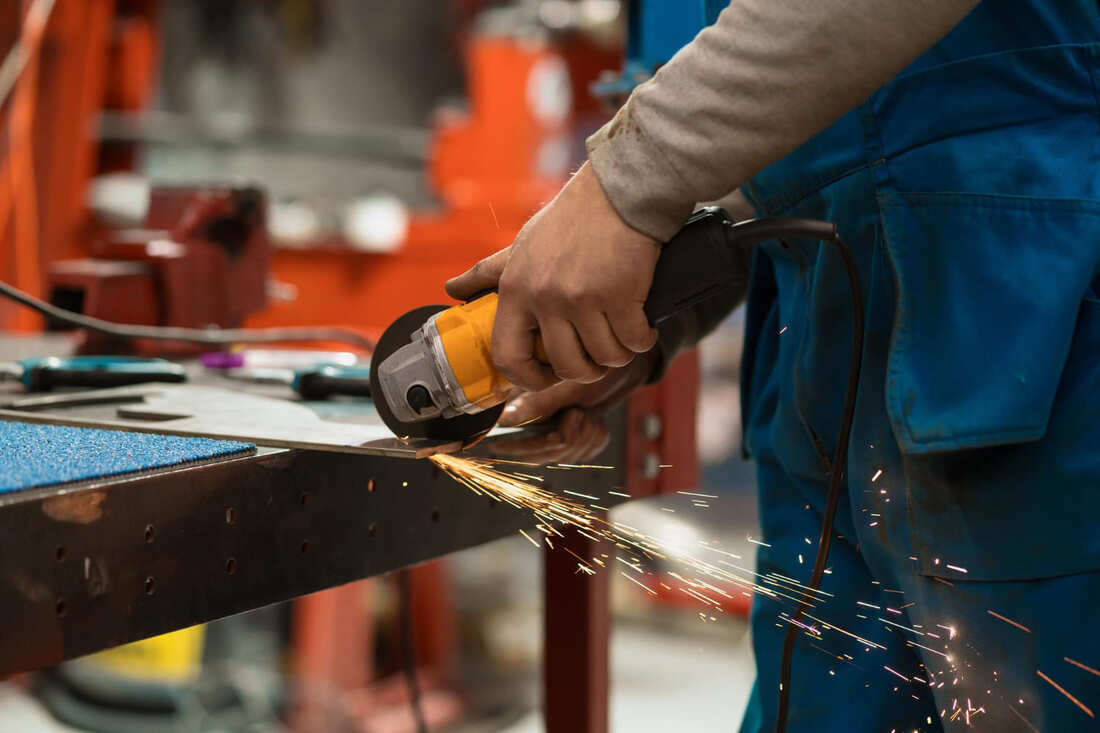 Introduction: Weldment assemblies are essential components in many manufacturing sectors, including aerospace, construction, and the automobile industry. Weldment assemblies' dependability, accuracy, and quality are largely determined by the suppliers and manufacturers who provide them. In this domain, selecting the appropriate partner is essential to guaranteeing product integrity, effectiveness, and eventually, customer satisfaction. We examine some of the leading suppliers and manufacturers of Weldment Assy in this thorough analysis, stressing their salient characteristics, advantages, and contributions to the market.
Conclusion: In conclusion, the realm of weldment assembly manufacturing and supply is populated by several prominent players, each offering a unique blend of innovation, quality, and reliability. From industry giants like Lincoln Electric and Miller Electric to global leaders like ESAB, Fronius, and Kemppi, manufacturers and suppliers have a plethora of options to choose from. Regardless of the specific requirements or applications, these companies excel in delivering top-notch weldment assemblies that meet the highest standards of performance, precision, and durability. As manufacturing processes evolve and industries embrace technological advancements, the role of weldment assembly manufacturers and suppliers will continue to be pivotal in driving innovation and progress across various sectors. ALSO READ: A BETTER UNDERSTANDING OF ARM BRACKET 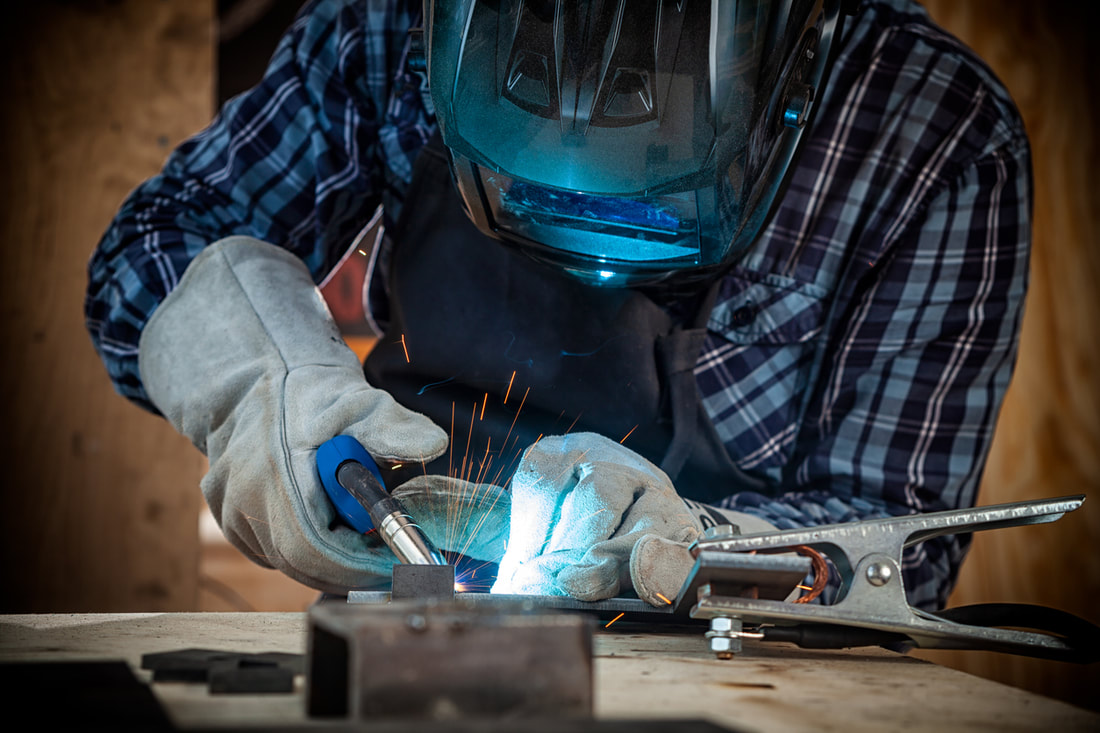 You've come to the correct place if you're seeking information on design for manufacturing (DFM) for sheet metal fabrication. Our blog is full of a wide range of topics, including how to design parts that can be manufactured as well as advice on selecting the best material, weld type, hardware, and more for your project. We are confident that you will find something of interest here, whether you are a design engineer or a consumer of bespoke sheet metal parts like Support Bracket. It's crucial to comprehend the foundations of a new production process before deciding to use it. In other words, you need to familiarize yourself with what it is, how it functions, and all of its benefits. We'll go over the fundamentals of sheet metal fabrication, and we hope to shed some light on this method of producing metal, which has a wide range of applications in numerous fields. What is The Fabrication of Sheet Metal? The term "sheet metal fabrication" describes the process of transforming flat metal sheets into metal objects and buildings. The majority of sheet metal processing techniques involve converting various sheet metal types into parts and components. Therefore, it is useful to think of this metal forming process as a collection of forming techniques rather than as a single manufacturing process. Methods of Making Sheet Metal To understand how different parts are made with sheet metal fabrication, you need to know the different techniques that are used. Using these sheet metal processing methods, flat pieces of metal can be turned into useful three-dimensional parts. Here are the most common ways to work with sheet metal. Cutting: Most of the time, cutting is the first step in making sheet metal. As its name suggests, it is done by cutting the metal sheet. In other words, manufacturers start with a rectangular sheet of metal and cut it to size based on how the customer wants the part to look. Sheet metal can be cut in many different ways. Support Plate is a kind of sheet metal that is fabricated through the cutting method of sheet metal fabrication. Stamping: Stamping is a way to change flat metal blanks into different shapes without using heat. In this process, a tool and die are used. When the tool is hit, the die changes the shape of the metal by using shear pressure. Bending: Bending is another important step in making things out of sheet metal. It involves bending the metal sheets, as the name suggests. Metal fabricators use press brakes, rolling machines, and other tools to bend sheets of metal. Standard shapes like U-bends and V-bends can be made with these sets of tools. Frame Bracket is manufactures from bending method. Punching: Punching is a way of making holes in a sheet of metal. A punch and die are used for this method (often made from a hard metal). Shear force is used by the materials to punch holes in the metal sheet. The scrap material from the hole is then picked up by the die. Punching is another way to make a hole in a sheet of metal. With CNC punching, we can make holes that are up to 50 mm in diameter. Braces Plate is made from the punching method. Welding: Welding is one of the last steps in making something out of sheet metal. It is one of the most important ways to join two or more pieces of metal into a single part. There are many different ways to weld, such as stick welding, MIG welding, and TIG welding. Even though they work in different ways, all three are used to join metal parts together by melting the edge and adding filler. This makes a metal bond between the pieces, fusing them together strongly. Obviously, welding is only needed if a product has two or more separate parts. Choosing The Material for Making Sheet Metal Sheet metal engineering uses a wide range of materials. Make the best choice for your product to make sure it has the best quality. Stainless Steel: There are different kinds of stainless steel from which to choose. They can be made of authentic stainless steel. These are metals that are not magnetic and have a lot of nickel and chromium in them. They are used a lot because they don't rust and can be shaped in different ways. On the other hand, stainless steel can be magnetized. They can be used for things that aren't structural or for decoration. Products made from martensite stainless steel are also strong and resistant to corrosion. Hot-rolled steel is a type of steel that is made by rolling it over and over again at over 1700 degrees Fahrenheit. Because they are flexible, these steels are easy to shape into large pieces. Cold-rolled steel is mostly hot-rolled steel that has been worked on more. They are smoother and have more room for error. Pre-Plated Steel: This type of steel is also called galvanized sheet metal. They have a coating on them that keeps them from rusting. They also make it easier to work with sheet metal because they are more flexible. Aluminum is another material that is often used in manufacturing. It has a great balance of strength and weight. It also has a lot of features that help it meet the needs of many applications. Copper/Brass: Brass is easy to work with because it has less zinc than copper. Copper metals also have oxide layers that keep them from rusting. Both materials are good choices for building materials because they look nice. Things To Think About When Designing Sheet Metal Fabrication When modelling a sheet metal part, here are some of the most important design features to think about: Thickness: A wall's thickness should be the same everywhere. Different thicknesses of sheet metal will be needed for shapes with more than one wall thickness. So, getting parts to line up and face the right way may be hard or take time. Bend: The inside bend radius of a piece of sheet metal should be at least the same as its thickness. This will help keep the final parts from being skewed or cut up. Keeping the bend radius the same across the whole part saves money and helps with orientation. Bend allowance and deduction: The "bend allowance" is the amount of material that needs to be added to the actual lengths of the parts to help make a flat pattern. Bend deduction is the amount of material that needs to be taken off the length of the flanges in order to get a flat pattern. The orientation of the holes and slots is also very important: Holes and slots should have a diameter at least as big as the sheet metal's thickness. Also, there should be enough space between the holes. They shouldn't be too close to the edge of the material. There are also hems, notches, tabs, curls, fillets, and countersinks to think about. Tips for The Sheet Metal Welding Process Welding is the process of using fusion to join together two pieces of metal, glass, or thermoplastic that have the same melting point and make-up. Today, there are many different ways to weld sheet metal, and each one is good for a different alloy or use. Here are some tips on how to weld sheet metal correctly: Match the right process to the right metal: Before arc welding and oxyacetylene gas, there were simpler ways to do things. Modern technology has made it easier to weld even the hardest metals. But each type of sheet metal has its own way of being welded. For example, TIG welding is best for aluminium and other thin alloys, while MIG/MAG welding is best for steel and iron. Our job is to pick the right one. Pick the right business: Give your welding to someone you can trust. How do you judge it? Pay attention to the type of equipment used, how well-trained the team is, and what guarantees are given for the product. Do a test on the metal: Before you start to weld in large quantities, you should do a test on the metal. Best Sheet Metal Components Manufacturers in India - INDGIRKA When welding sheet metal, heat is the most important thing. If you set it up right, you'll get a perfect weld, but if you turn it up too much, you'll just burn through the material. So, depending on the metal, INDGIRKA uses different types of welding for the sheet metal components. Do you need high-quality welding services for making custom metal parts? Or you need to make things but don't know how to weld sheet metal? What you need is INDGIRKA. We offer some of the best services in welding, laser cutting, and other related technologies. INDGIRKA does excellent and professional work with sheet metal. We just require you to upload your design files. What else? We promise high quality at fair prices and quick turnaround times. Contact us now. Also Read: The Most Common Uses of Sheet Metal 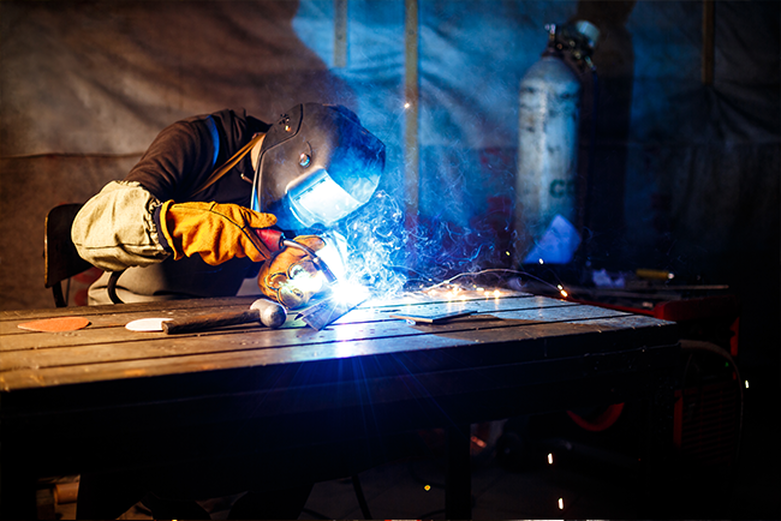 Sheet metal is a type of metal that is formed through industrial processes. This metal is typically formed into flat, thin sheets. Sheet metal is considered the most basic form of metalworking. This metal is used in the manufacture of a wide range of everyday objects. This metal is commonly used in medical tables, automobile and truck bodies, building roofs, and aeroplane fuselages. The thickness of the sheet metal can differ depending on the application. They are available in coiled strips or flat pieces. This metal is bent or cut into various shapes using various tools, which leads to products like Frame Bracket and Support Bracket. What do Brackets do? In short, a bracket is a part that holds something (like a shelf) to something else (like a wall). People might think of it as a kind of fastener, but that's not quite right. The bracket is connected to the other parts with real fasteners, like screws. What are Brackets? How do You Use Them? Brackets are devices that hold two things together. They can be made of wood or stone and are used to connect things like parapets and eaves to walls. In engineering, though, they are usually made of sheet metal and used to hold things like shelves, counter tops, flooring, parts of furniture, and TVs that are mounted. Even though there are many different kinds of brackets, most of them are L-shaped, with the vertical part attached to a wall (or other tall structure) and the horizontal part attached to a smaller object, like a shelf, that is attached to the wall. Brackets often have threaded or unthreaded holes in them so that screws or other fasteners can be put through them. However, this is not what makes a bracket a bracket. A Bracket Can Do More Than Just Connect Two Things It can also hold things up. Some brackets, like gusset brackets, are made with a diagonal piece that makes the bracket less stressed and lets it hold more weight. Sheet metal fabrication is one of the easiest and most cost-effective ways to make brackets, especially simple ones like angle brackets. Most brackets are made up of two or more planes connected along one edge. The easiest way to make this kind of object is to bend a flat object (like a piece of sheet metal) in two or more places. For example, you could give a flat rectangle with a straight profile a 90° bend to make an L-shaped bracket. Do You Need Custom Support Bracket for Your Project? We can make your custom-designed brackets to spec in days thanks to our industrial-grade metal 3D printing service, high-tech machining service, advanced sheet metal fabrication service, laser cutting, water jet cutting, and plasma cutting service. INDGIRKA offers hundreds of materials to choose from, including aluminium, stainless steel, copper, bronze, steel, and titanium. INDGIRKA delivers quality and value whether you're making metal brackets, mounts, or base plates. You can upload your CAD file to receive an instant quote and have the parts delivered to you in a matter of days. Tension and compression forces must be considered when designing a load-bearing structure, such as a building, a storage rack, or a cabinet. Tension occurs when an object is pushed from one end against a stationary horizontal or vertical platform, whereas compression occurs when an object is pushed from both ends. These forces, if not properly addressed, have the potential to cause the structure to collapse. How do They Get Made? There are many ways to make a bracket, such as by casting or machining. But sheet metal fabrication is the best way to make simple brackets. Bending is one of the most common ways to work with sheet metal. A machine called a brake is used to bend sheet metal up to 120°. This is probably the most important step in making brackets out of sheet metal, since almost all brackets have at least one bend. There must also be other ways to work with sheet metal. Before sheet metal can be bent, it must be cut to the right size with a machine like a laser cutter or plasma cutter. A punching machine can be used to make holes in the bracket for screws, and welding may be needed to add gussets or other features. In addition to the processes for working with sheet metal described above, machining can be used to add more complex features to brackets, especially when they are custom-made for nonstandard parts. The Best Materials for Brackets Made of Sheet Metal Brackets can be made from a number of different metals, depending on the load they need to hold, how they look, how they need to be finished on the surface, the minimum and maximum thickness, the required bending angles, and the budget for making them. Some Materials That Could be Used for Sheet Metal Brackets are:
Leading Manufacturer of Sheet Metal Brackets in India So we discussed the bare basics of sheet metal brackets. Sheet metal is now widely used in industries. We at INDGIRKA manufacture top-level Sheet Metal Parts Manufacturers in India and supply them around the world. Also Read: A Better Understanding of Bracket |
|
